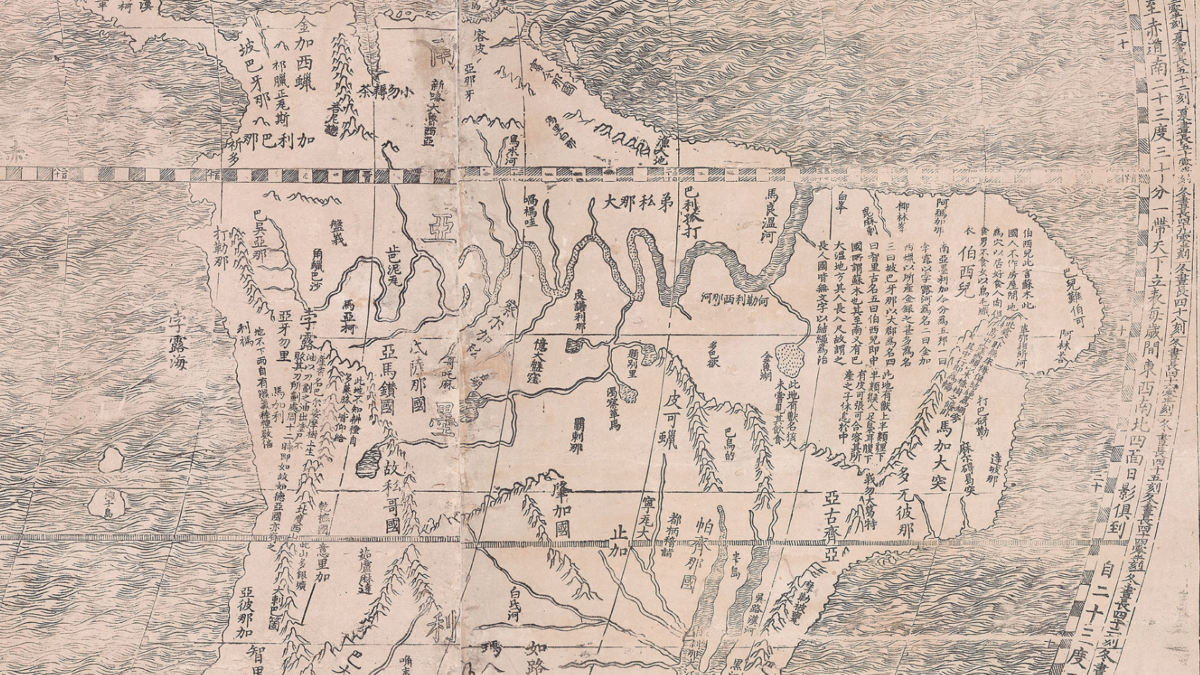Activity
The Ricci Map, 1602 (interactive)
Objective: Tap the "Explore the Map" button below to begin exploring this interactive map. Zoom-in on high resolution details and discover English translations of the classical Chinese text and synopsis by scholars.

Screenshot of Ricci Map Interactive.
When Matteo Ricci (1552–1610) settled in southern China in 1583, he displayed a European world map on the wall of his house. After visitors asked for a translation, he and Chinese colleagues produced a series of increasingly larger maps, including the six-panel woodblock-printed version made in 1602. The map on display at the museum is one of only six complete copies in existence, and it is the oldest surviving Chinese map to show the Americas.
The depiction of the world is based upon European models, but the mode of production (woodblock print), original format (screen or scrolls) and heavy annotation are hallmarks of Chinese tradition. Unlike European maps, which place the Atlantic Ocean at the center, Ricci has put the Americas on the right and Eurasia and Africa on the left, placing China and the Pacific Ocean at the center.
A Chinese tradition of densely annotating maps is evident in the text that covers the map, in some places supplying place names, and in others a remarkable depth of information about the geography of the world and the customs of people and animals in it. The map also contains imaginative descriptions of peoples at the peripheries of the world as known to China and Europe in the 17th century.
This map is featured in the exhibition, China at the Center: Rare Ricci and Verbiest World Maps, on view at the Asian Art Museum from March 4–May 8, 2016. View another map in this exhibition by Ferdinand Verbiest (Flemish, 1623–1688).
The passages on this map combine fact with fantasy. In descriptions of the peoples of the world, the text reflects the seventeenth-century viewpoints and prejudices of its makers.





